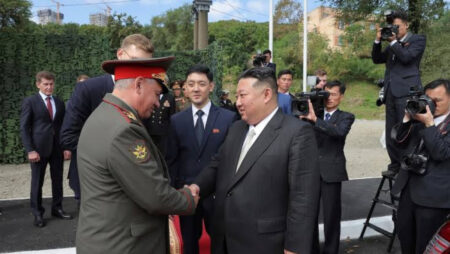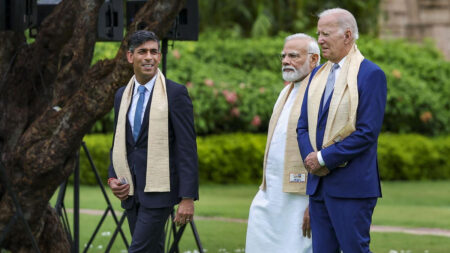Hwasong-15, an intercontinental ballistic missile (ICBM), was tested on Saturday afternoon in a “sudden launching drill”. The drill was marked as all systems go for any vigorous counterattack against bellicose forces.

Table of Contents
Hwasong-15
Developed by North Korea, the Hwasong-15 is the long-range ballistic missile with the theoretical capability to reach the US mainland. It was first put to the test on 28 November, 2017. On Saturday, the missile was fired from Pyongyang airport and landed into sea off Japan’s west coast after an “emergency firepower combat standby order” and a written order issued by the leader, Kim Jong Un. As per reports by the Korean Central News Agency, prior to hitting a precogitated area in open waters, the Hwasong-15 flew with a maximum altitude of 5,768 km, covering 989 km for 4,015 seconds.
Sudden Launching Drill
The unforeseen launch of the intercontinental ballistic missile was guided by the Missile General Bureau, which deals with the missile development of the country. This launch was conducted just days prior to the annual military nuclear drills by the U.S. and South Korea, named the Deterrence Strategy Committee Tabletop Exercise. These drills are to be conducted by February 22 at the Pentagon in the presence of senior defence policymakers from both countries and will be focused on enhancing their retaliation against the North Korean nuclear attack. According to a US-based analyst, Ankit Panda, this launch was an exercise rather than a traditional test by North Korea and more such activities can be expected in near future.

G7 Condemnation
The G7 has castigated and termed the launch as a reckless behaviour which calls for a unified response by the international bodies and momentous measures by the Unites National security Council. On the second day of the ongoing Munich Security Conference, South Korean Foreign Minister Park Jin, Japanese Foreign Minister Yoshimasa Hayashi, and U.S. Secretary of State Antony Blinken showed their consent to work closely together about the sudden ballistic missile launched by North Korea. The foreign Chiefs of South Korea, Japan, the United States condemned North Korea and claimed that this unanticipated missile launch is a threat and a prominent challenge to regional security and to the international community.

Plans Ahead
A professor at the University of North Korean Studies, Seoul, Yang Moo-Jin, suggested that North Korea is credible to conduct further weapons tests that can comprise a new solid-fuel missile, as the Saturday’s launch signified that the country may be equipped with a system to launch even a liquid-fuelled ICBM without prior announcement and planning. This missile can anticipate North Korea’s faster deployment of missiles in wartime.

North Korea’s History Of Missile Launch
By March 2020, it was reported that since 1984, the country had tested 147 strategic missiles. 15 such tests were conducted under the rule of Kim Il-sung, 16 under Kim Jong-il, and 119 under the rule of Kim Jong-un (until December 2019). In the year 2020, North Korea carried out 4 missile tests, followed by another 8 in 2021. 2022 marked as the year when North Korea fired one-fourth of all missiles ever tested by the country. Although the ballistic missile and nuclear weapons programmes of North Korea are banned under the resolutions of U.N.S.C., the country claims these programs to be essential for tackling the hostile policies by U.S. and its counterparts.













